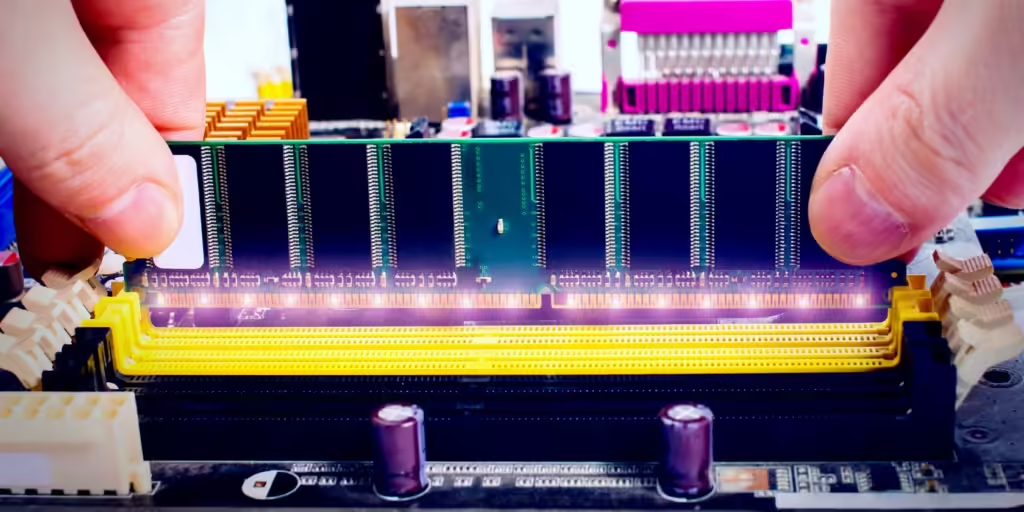
In today’s fast-paced digital world, the demand for seamless and efficient computing experiences has never been higher. Active memory expansion is a cutting-edge solution that optimizes system performance by enhancing the way memory is utilized. Whether you’re a gamer, a professional handling complex tasks, or simply looking to improve your device’s efficiency, understanding memory optimization is crucial. This article explores everything you need to know about active memory expansion, how it works, and why it matters for modern systems.
What Is Active Memory Expansion and How Does It Work?
Definition of Active Memory Expansion
Active memory expansion is a process that dynamically optimizes system memory to improve performance. It works by reallocating unused memory resources and compressing inactive data, ensuring your system runs faster and more efficiently. Unlike traditional upgrades that rely on physical hardware, this technology leverages software-based solutions to boost memory capacity without additional hardware investment.
This process is especially important in environments where multitasking and resource-intensive applications demand more than what physical RAM can provide. By intelligently analyzing the workload, active memory expansion ensures that priority tasks receive the required resources, while lesser-used applications are compressed or offloaded to virtual memory systems.
The Role of Dynamic Memory Allocation
Dynamic memory allocation is the backbone of active memory expansion. By distributing memory resources in real time, it ensures efficient data processing and minimizes performance bottlenecks. This technology adapts to the user’s needs, allocating memory to high-priority tasks while compressing low-priority data. This seamless management reduces lag and enhances overall system responsiveness.
For example, when running a video editing application, dynamic memory allocation ensures that most of the system’s resources are directed towards rendering and processing, while background tasks like web browsers use minimal resources. This intelligent allocation not only improves speed but also enhances the user’s overall experience.
Benefits of Using Active Memory Systems
Enhanced System Performance
One of the primary advantages of active memory systems is the significant boost in system performance. By optimizing memory usage, these systems improve speed and responsiveness, allowing for faster load times and smoother multitasking. Users can experience better performance in applications, games, and resource-heavy tasks without upgrading their hardware.
Enhanced system performance also translates to increased productivity. Professionals working on design, programming, or video editing tools can handle multiple tasks without interruptions, while gamers can enjoy immersive experiences without lag or frame drops.
Cost-Effective Upgrades
Active memory expansion provides a cost-effective alternative to traditional hardware upgrades. Software-based tools can unlock additional memory capacity, eliminating the need for expensive physical upgrades. This makes it an ideal solution for users looking to enhance their system without incurring high costs.
For businesses, the cost-saving aspect of active memory expansion is invaluable. Instead of replacing entire systems, companies can extend the lifecycle of their existing hardware by integrating memory optimization tools. This approach not only reduces expenses but also minimizes e-waste, aligning with sustainable computing practices.
How to Optimize System Memory Using Active Memory Expansion
Best Practices for Efficient Data Processing
Optimizing system memory begins with efficient data processing techniques. This involves regularly monitoring system performance, closing unnecessary applications, and using tools designed to manage and allocate memory effectively. Employing active memory systems ensures real-time optimization, enabling better resource allocation and improved task handling.
In addition, users can benefit from setting clear priorities for applications. By identifying which programs require the most resources, users can allocate memory more effectively, ensuring high-priority tasks are completed without delays. Regular updates to both software and operating systems also play a crucial role in memory optimization.
Tools and Techniques for RAM Expansion
Several tools and techniques are available for expanding RAM virtually. Software solutions like memory compression tools and virtual memory systems are highly effective in optimizing available resources. These tools work in conjunction with your existing hardware to provide a seamless computing experience.
AI-driven memory management tools have also gained popularity. These advanced solutions analyze usage patterns and predict future needs, ensuring resources are always available for critical tasks. By integrating these tools, users can achieve peak performance without manually managing system settings.
Top Technologies for Memory Expansion

Hardware vs. Software Solutions
Memory expansion can be achieved through both hardware and software solutions. Hardware upgrades, such as adding more RAM, provide additional physical capacity, while software tools optimize existing memory resources. The choice between hardware and software depends on the user’s budget, requirements, and system limitations.
While hardware upgrades are effective, they can be costly and require technical expertise. Software solutions, on the other hand, are more accessible and can be deployed across multiple devices. For instance, a business with multiple workstations can implement software-based memory optimization tools to enhance performance without replacing hardware components.
Virtual Memory Systems
Virtual memory systems play a pivotal role in memory expansion. By utilizing a portion of your storage as additional memory, these systems extend the capacity of your RAM, allowing for smoother multitasking. Virtual memory acts as a safety net for systems running resource-intensive applications, ensuring uninterrupted performance.
For example, when a system’s RAM is fully utilized, virtual memory temporarily stores inactive data on the hard drive or SSD. This prevents crashes and ensures that active tasks continue to run smoothly. However, it is important to note that virtual memory systems are most effective when paired with SSDs, as they provide faster read/write speeds compared to traditional hard drives.
Conclusion
Active memory expansion is a transformative technology that addresses the growing demands for better system performance. By optimizing memory usage, this solution enhances speed, multitasking, and overall efficiency without requiring costly hardware upgrades. Whether you’re managing a high-performance gaming rig or a professional workstation, active memory systems provide a cost-effective, scalable solution for modern computing needs.
For individuals and businesses alike, integrating active memory expansion tools into daily workflows can result in significant performance gains. With continuous advancements in AI-driven memory management and virtual memory systems, the future of computing promises even greater efficiency and adaptability. By staying informed and leveraging the right tools, users can unlock the full potential of their devices and achieve a seamless digital experience.
FAQs
What is the difference between active memory expansion and virtual memory?
Active memory expansion focuses on optimizing existing RAM through dynamic allocation and compression, whereas virtual memory uses storage space as a supplement to physical RAM.
Can software-based memory tools replace hardware upgrades?
Yes, software tools can significantly optimize memory usage. However, for extreme performance needs, combining software tools with hardware upgrades may be ideal.
Is active memory expansion suitable for gaming systems?
Absolutely. Active memory systems enhance gaming performance by reducing lag and ensuring smooth multitasking.
What are the best tools for memory expansion in PCs?
Top tools include memory compression software, virtual memory managers, and AI-driven optimization systems.
How does memory management improve system performance?
Efficient memory management ensures optimal resource allocation, reducing bottlenecks and improving the speed of applications.






